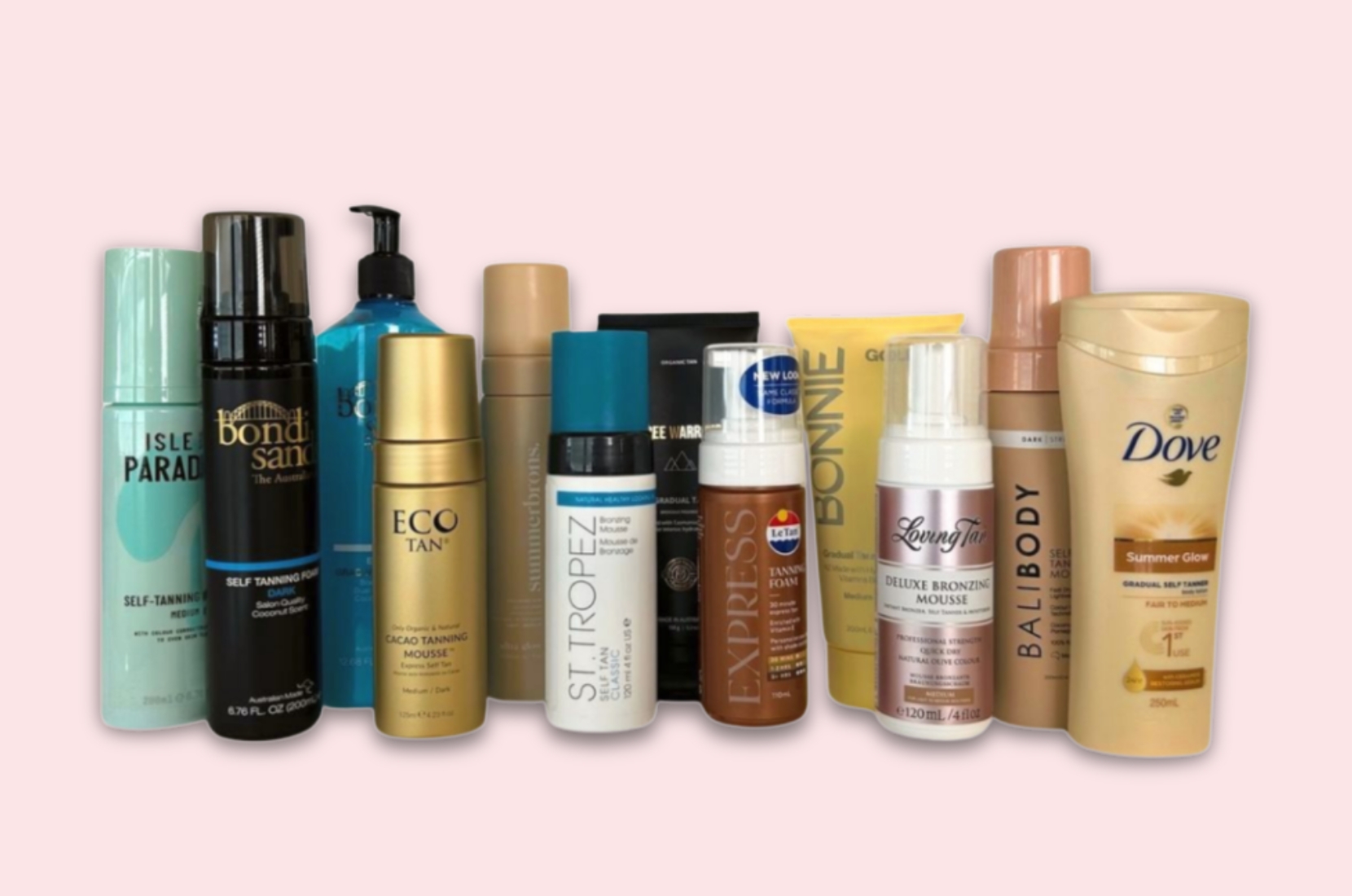Best fake tans

Our trial of instant and gradual fake-tanning products revealed three instant tans wowed our triallists, but proved the real winners were gradual tans. Read our trial to find out which fake tan performed the best.

How we trial fake tans
We enlisted 12 triallists to rate one each of 12 fake tanning products – eight instant and four gradual. Instant tans produce strong results in a matter of hours after only one application. They’re usually mousses, foams or gels. Gradual tans are applied several times over a few days to build up to the desired colour. They’re usually lotions and look like a moisturiser.
We randomly assigned each triallist one product to trial for one week. All our triallists received an exfoliating mitt. Those trialling an instant tan were also given a tanning mitt.
Instructions for triallists
Exfoliate using the provided exfoliating mitt the day before your application. Exfoliate everywhere you’ll be applying the tan.
Moisturise your knees, ankles, elbows and hands if you’ve got dry skin.
Apply the tan according to the directions on the packaging, making sure to note how long the product needs to be left on.
Reapply the gradual tanning product once a day for the trial period until you reach your desired tan.
Remove the tan at the end of the seventh day of wear, using the provided exfoliating mitt.
After the trial, the triallists ranked their tans on a scale from 1 to 5, with 5 being excellent and 1 being terrible. They considered their tan’s ease of application and the result at the start, scent, transferability onto clothing or bedding, durability and ease of removal. Each triallist has unique skin texture and tone, and our results might differ from your own experience.
Results
Want to read the full article?
- Thousands of expert product/service reviews
- Personal support through our Consumer Rights Advice Line
- Premium articles and in-depth buying advice
- Add a Consumer magazine for even more exclusive content
Chemicals in fake tan
Using fake products to achieve a glow is safer than risking your skin in the sun or on a tanning bed. Fake tans have an active ingredient, dihydroxyacetone (or DHA), that changes your skin’s colour.
“DHA is a carbohydrate sugar that reacts with amino acids in the skin, resulting in brown melanoidin skin stain,” explained dermatologist Dr Louise Reiche.
Over the course of 7 to 10 days, the top layer of your skin dies and sheds, and the tan disappears. DHA is the only Food and Drug Administration (FDA)-approved active tanning ingredient, and it’s generally considered safe to use on the skin. But keep an eye on how your skin reacts, Reiche warned.
“Laboratory studies have shown that DHA can alter skin, respiratory and other cell types at the cellular and molecular levels. Irritant and allergic DHA-induced contact dermatitis has been reported but, to date, no other major toxicities have been discovered.”
Spray tans are a different matter, however. These products are aerosols that are carried through the air and can be inhaled.
“The FDA, which regulates sunless tanning products as cosmetics, allows DHA for external use while maintaining that its ingestion, inhalation or contact with mucosal surfaces should be avoided,” said Reiche.
When using a spray tan at home or attending a fake tan spray booth, make sure to wear eye shields and a mask over your nose and mouth.
Remember sun protection when wearing fake tan
Fake tans offer no sun protection. To stop your skin from getting damaged from the ultraviolet (UV) rays in sunlight, you’ll need to rely on sunscreen and other protective measures. Make sure your sunscreen provides broad-spectrum protection against both UVA and UVB rays.
To provide good protection, sunscreen must be applied properly. You need to:
apply plenty (Adults need about 7–9 teaspoons of sunscreen for a full-body application. That’s about 2 teaspoons for each leg and 1 teaspoon for each arm, your back, your front and your face, which includes your neck and ears)
apply early (Sunscreen needs to be absorbed into the skin before you’re protected, so apply at least 20 minutes before going outside)
reapply often (Reapply sunscreen every 2 hours you’re outside. Also reapply after swimming, mopping up sweat or towelling dry).
Unsure which sunscreen to buy? Find out which sunscreens you can trust with our sunscreen database.
We've tested 153 sunscreens.
Find the right one for you.
Aloe Up

Aloe Up

Aloe Up

Member comments
Get access to comment